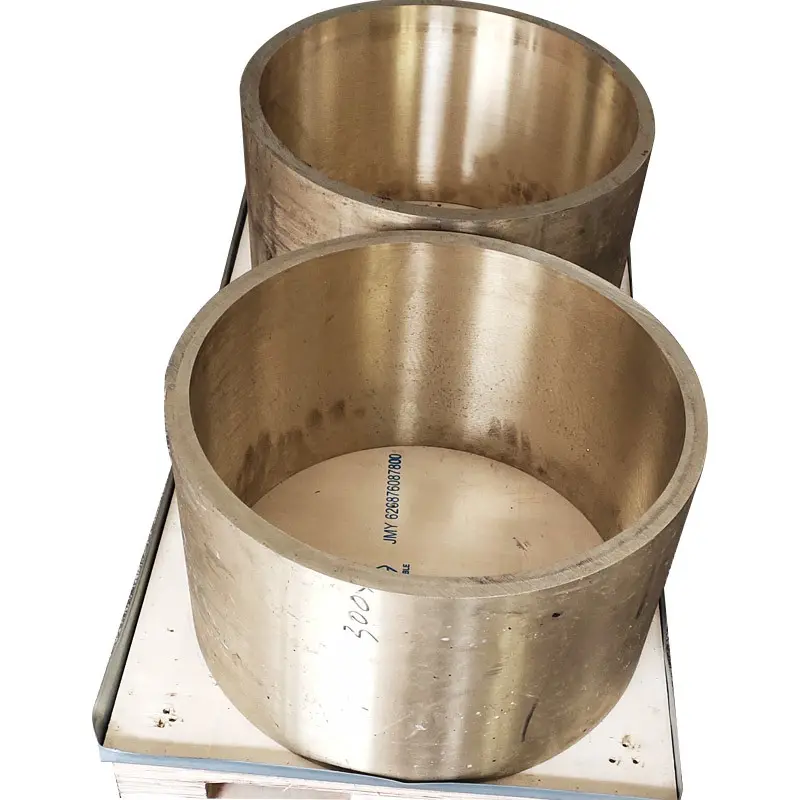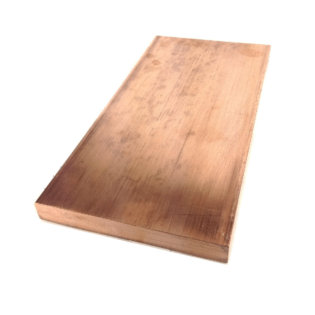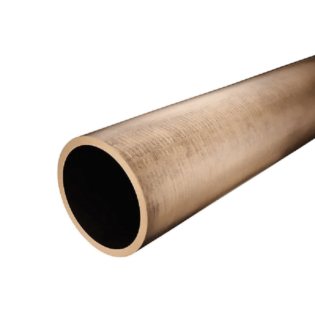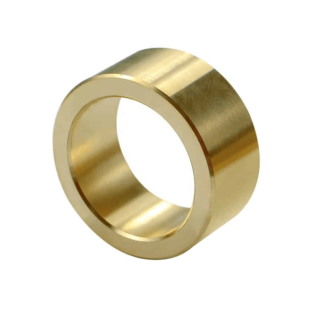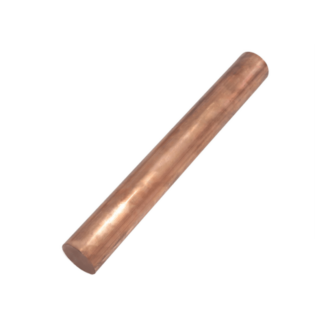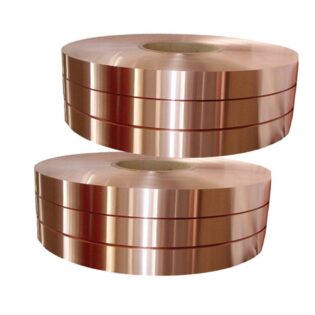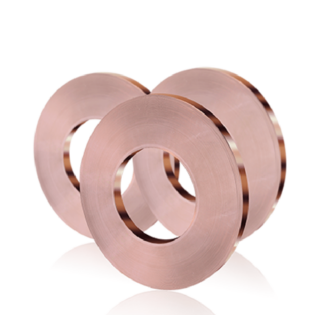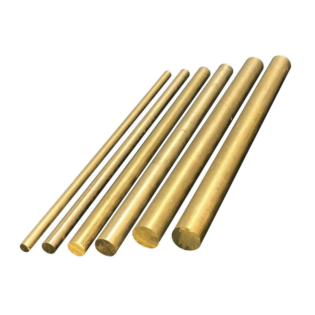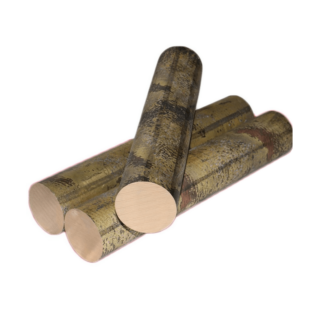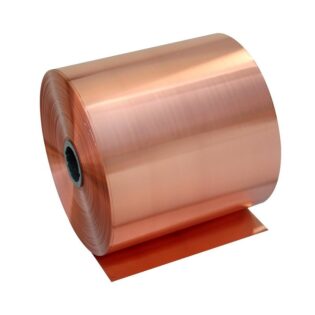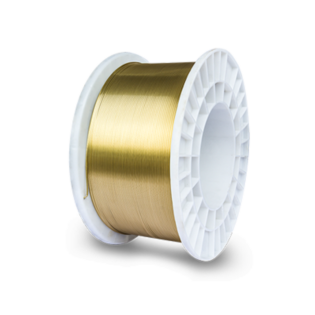C95400 Description du produit : Bronze aluminium
Le bronze nickel-aluminium C95400 est un alliage de cuivre haute performance réputé pour ses propriétés mécaniques exceptionnelles et sa résistance supérieure à la corrosion. Ce matériau polyvalent est largement utilisé dans les applications marines, industrielles et aérospatiales. Sa composition unique, mélangeant du cuivre avec de l'aluminium, du nickel, du fer et du manganèse, contribue à ses performances exceptionnelles dans des environnements difficiles.
Les principales fonctionnalités du C95400 incluent :
- Excellente résistance à la corrosion, notamment en eau de mer
- Haute résistance et durabilité
- Bonne résistance à l'usure
- Propriétés anti-étincelles
- Résistance à la cavitation
- Capacité à maintenir la résistance à des températures élevées
Ces caractéristiques font du C95400 un choix idéal pour les composants critiques dans diverses industries, de la construction navale à l'ingénierie aérospatiale.
Présentation du produit :
Le bronze nickel-aluminium C95400 est un alliage de cuivre haute performance qui combine d'excellentes propriétés mécaniques avec une résistance supérieure à la corrosion. Ce matériau polyvalent est largement utilisé dans diverses industries, notamment dans les applications marines, industrielles et aérospatiales. Sa composition unique de cuivre, d'aluminium, de nickel, de fer et de manganèse contribue à ses performances exceptionnelles dans des environnements exigeants.
Composition chimique:
La composition chimique du C95400 est soigneusement équilibrée pour obtenir ses propriétés souhaitables :
Tableau 1 : Composition chimique du C95400 (%)
| Élément | Pourcentage |
|---|---|
| Avec | 83.00 minutes |
| Fe | 3h00-5h00 |
| Dans* | 1,50 |
| Al | 10h00-11h50 |
| Mn | 0.50 |
*La valeur Ni inclut Co.
Remarque : Cu + somme des éléments nommés, 99,5 % min. Sauf indication contraire, les valeurs uniques représentent des maximums.
Propriétés mécaniques:
Le C95400 présente de fortes propriétés mécaniques, ce qui le rend adapté à un large éventail d'applications :
Tableau 2 : Propriétés mécaniques du C95400
| Propriété | Coutume américaine | Métrique |
|---|---|---|
| Résistance à la traction (min) | 85 ksi | 586 MPa |
| Limite d'élasticité (min) | 32 ksi | 221 MPa |
| Allongement (min) | 12% | 12% |
| Dureté Brinell (charge de 3 000 kg, typique) | 170 BHN | 170 BHN |
Performances à différentes températures :
Le C95400 conserve sa résistance à des températures élevées, ce qui le rend adapté aux applications à haute température :
Tableau 3 : Performances à différentes températures
| Température | Résistance à la traction | Limite d'élasticité |
|---|---|---|
| 20°C (68°F) | 586 MPa (85 ksi) | 221 MPa (32 ksi) |
| 200°C (392°F) | 510 MPa (74 ksi) | 200 MPa (29 ksi) |
| 400°C (752°F) | 420 MPa (61 ksi) | 180 MPa (26 ksi) |
Remarque : Les valeurs sont approximatives et peuvent varier en fonction des traitements thermiques et des processus de fabrication spécifiques.
Applications industrielles :
La polyvalence du C95400 le rend adapté à un large éventail d'applications dans diverses industries :
Tableau 4 : Applications industrielles du C95400
| Industrie | Applications |
|---|---|
| Automobile | Pistolets à souder |
| Attaches | Grandes vis de maintien, écrous |
| Industriel | Segments de roulement, bagues, engrenages, colliers haute résistance, |
| pièces de train d'atterrissage, pièces de machines, cliquets, crochets de décapage, | |
| blocs de pression, pièces de pompe, composants de vannes | |
| Marin | Housses pour accastillage marin, construction navale |
| Ordonnance | Équipements gouvernementaux |
| Aérospatial | Composants de train d'atterrissage, bagues |
| Oil & Gas | Corps de vannes, composants de pompe |
Disponibilité de forme et de taille :
Le C95400 est disponible en différentes formes et tailles pour répondre à différentes exigences de fabrication :
Tableau 5 : Disponibilité en matière de forme et de taille
| Forme | Gamme de tailles |
|---|---|
| Solides | 1/2″ à 10″ DE |
| Tubes | 1 1/8″ à 12″ DE (Consulter l'usine pour l'épaisseur de paroi) |
| Rectangulaires | Jusqu'à 15″ |
| Longueurs standards | 144″ |
| Autres formulaires | Semi-finis, produits d'usine, formes proches du filet, |
| anode, stock de barres, billette/fleur, carrés, | |
| hexagone, plaque, profil ou forme structurelle, | |
| plats/barre rectangulaire |
Normes de production :
Le C95400 est conforme à diverses normes industrielles :
Tableau 6 : Normes de production
| Modèle standard | La désignation |
|---|---|
| ADC | C95400 |
| ASTHME | B505, B505M |
| SAE | J461, J462 |
| Fédéral | QQ-C-390, G5 ; QQ-B-671, classe 3 |
| Militaire | MIL-B-16033, classe 3 |
| Autre | Bronze d'aluminium 9C |
Normes et notes correspondantes dans différents pays :
Le C95400 possède des grades équivalents ou similaires dans diverses normes internationales :
Tableau 7 : Normes et notes correspondantes dans différents pays
| Pays | Norme/qualité |
|---|---|
| Etats-Unis | C95400 (États-Unis) |
| Royaume-Uni | AB2 (BS) |
| Allemagne | CuAl10Ni5Fe4 (DIN) |
| Japon | CAC703 (JUSTE) |
| International | OIN 428-2:2009 CuAl10Ni5Fe4 |
Soudage, transformation et traitement thermique :
Le C95400 peut être traité selon différentes méthodes, chacune ayant ses propres caractéristiques :
Tableau 8 : Soudage, transformation et traitement thermique
| Traiter | Recommandations et caractéristiques |
|---|---|
| Soudure | Bonne adéquation |
| Brasage | Bonne adéquation |
| Soudage oxyacétylénique | Non recommandé |
| Soudage à l'arc sous protection gazeuse | Bonne adéquation |
| Soudage à l'arc en métal revêtu | Bonne adéquation |
| Usinage | Indice d'usinabilité : 60 |
| Utilisez des outils tranchants et des vitesses de coupe modérées | |
| Polissage | Peut atteindre un lustre élevé avec des techniques appropriées |
| Traitement thermique | Recuit de mise en solution à 900-950°C, trempe à l'eau |
| Traitement à froid | Un écrouissage limité est possible, un écrouissage se produit |
Avantages et inconvénients :
Le C95400 offre plusieurs avantages mais présente également certaines limites :
Tableau 9 : Avantages et inconvénients du C95400
| Avantages | Désavantages |
|---|---|
| Excellente résistance à la corrosion | Coût plus élevé que les bronzes standards |
| Bonne résistance à l'usure | Disponibilité limitée |
| Haute résistance | Plus difficile à usiner |
| Propriétés anti-étincelles | Plus lourd que les alliages d'aluminium |
| Bonne résistance à la cavitation | Conductivité thermique inférieure à celle du cuivre pur |
| Excellente résistance à la fatigue | Potentiel de fissuration par corrosion sous contrainte |
| Bonne résistance à haute température | Sensible au lessivage sélectif dans certains environnements |
Produits similaires et comparaison :
Pour mieux comprendre la position du C95400 parmi les alliages similaires, voici une comparaison :
Tableau 10 : Produits similaires et comparaison
| Alliage | Cu % | Al % | dans % | Fe% | Mn % | Résistance à la traction (MPa) | Limite d'élasticité (MPa) |
|---|---|---|---|---|---|---|---|
| C95400 | 83 minutes | 10-11.5 | 1,5 maximum | 3-5 | 00,5 maximum | 586 minutes | 221 minutes |
| C95500 | 78-82 | 10-11.5 | 3-5.5 | 3-5.5 | 3,5 maximum | 690 minutes | 280 minutes |
| C95800 | 79-82 | 8,5-9,5 | 4-5 | 3,5-4,5 | 1,5 maximum | 585 minutes | 240 minutes |
| C95700 | 71-79 | 10-12 | 4.5-6 | 4-5.5 | 1,5 maximum | 620 minutes | 275 minutes |
Propriétés physiques:
Comprendre les propriétés physiques du C95400 est crucial pour son application dans divers environnements :
Tableau 11 : Propriétés physiques du C95400
| Propriété | Coutume américaine | Métrique |
|---|---|---|
| Point de fusion – Liquide | 1900 °F | 1038 °C |
| Point de fusion – Solidus | 1880 °F | 1027 °C |
| Densité | 00,269 lb/po³ à 68 °F | 7,45 g/cm³ à 20 °C |
| L'acier par refusion sous laitier électroconducteur | 7h45 | 7h45 |
| Conductivité électrique | 13% SIGC | 00,075 MégaSiemens/cm à 20 °C |
| Conductivité thermique | 33,9 Btu/pied carré/pied h/°F à 68 °F | 58,7 W/m à 20 °C |
| Coefficient de dilatation thermique | 9 · 10⁻⁶ par °F (68-572 °F) | 15,5 · 10⁻⁶ par °C (20-300 °C) |
| La capacité thermique spécifique | 00,1 Btu/lb/°F à 68 °F | 419 J/kg à 20 °C |
| Module d'élasticité en traction | 15 500 ksi | 107 000 MPa |
| Perméabilité magnétique (comme moulé) | 1.27 | 1.27 |
| Perméabilité magnétique (température TQ 50) | 1.2 | 1.2 |
Ces propriétés physiques contribuent aux performances du C95400 dans diverses applications. Le point de fusion élevé permet une utilisation dans des environnements à température élevée, tandis que la densité relativement élevée offre une bonne résistance à l'usure et une bonne résistance. La conductivité thermique et électrique modérée le rend adapté aux applications où la dissipation thermique est importante mais pas critique.
Propriétés de fabrication :
Comprendre les propriétés de fabrication du C95400 est crucial pour les fabricants et les ingénieurs :
Tableau 12 : Propriétés de fabrication du C95400
| Méthode de fabrication | Adéquation/Caractéristiques |
|---|---|
| Soudure | Bon |
| Brasage | Bon |
| Soudage oxyacétylénique | Non recommandé |
| Soudage à l'arc sous protection gazeuse | Bon |
| Soudage à l'arc en métal revêtu | Bon |
| Usinage | Modéré (indice d'usinabilité : 60) |
| Forgeage | Bon (Température typique de forgeage : 1600-1800°F / 870-980°C) |
| Travail à chaud | Bon (Température de travail typique à chaud : 1300-1600°F / 700-870°C) |
| Travail à froid | Limité (le travail durcit rapidement) |
| Traitement thermique | Réactif au traitement thermique pour la valorisation immobilière |
Le C95400 présente une bonne soudabilité en utilisant des techniques de soudage à l'arc sous protection gazeuse et de soudage à l'arc avec métal revêtu. Cependant, le soudage oxyacétylène est déconseillé en raison du risque d’altération de la composition de l’alliage. L’usinabilité modérée du matériau (note de 60) suggère que même s’il peut être usiné, il peut nécessiter plus d’efforts et un outillage spécialisé par rapport aux alliages plus facilement usinables.
Conformité et réglementation :
Le Bronze Nickel-Aluminium C95400 est conforme à plusieurs réglementations importantes, notamment celles liées aux systèmes d'eau et à la sécurité environnementale :
Tableau 13 : Conformité du C95400
| Législation/Règlement | Statut de conformité |
|---|---|
| Loi fédérale sur la salubrité de l'eau potable (SDWA) | Conforme |
| S. 3874 Loi fédérale sur la réduction du plomb dans l'eau potable | Conforme |
| Californie AB1953 | Conforme |
| Loi 193 du Vermont | Conforme |
| RoHS (Restriction des substances dangereuses) | Conforme |
| REACH (Enregistrement, Évaluation, Autorisation et Restriction des Produits Chimiques) | Conforme |
Cette conformité garantit que le C95400 peut être utilisé dans un large éventail d'applications, y compris celles impliquant un contact avec l'eau potable, sans présenter de risques pour la santé ou l'environnement.
Résistance à la corrosion:
L'un des avantages les plus significatifs du C95400 est son excellente résistance à la corrosion dans divers environnements :
Tableau 14 : Résistance à la corrosion du C95400 dans divers environnements
| Environnement | Indice de résistance à la corrosion |
|---|---|
| Eau de mer | Excellent |
| Eau douce | Excellent |
| Eau saumâtre | Excellent |
| Acide sulfurique (dilué) | Bon |
| Acide chlorhydrique (dilué) | Modéré |
| Acide nitrique (dilué) | Ouvrage écroui par laminage puis stabilisé par traitement thermique à basse température jusqu'au quart de dur |
| Solutions alcalines | Excellent |
| Ambiances industrielles | Excellent |
| Atmosphères marines | Excellent |
L'excellente résistance à la corrosion dans l'eau de mer et les atmosphères marines fait du C95400 un choix idéal pour le matériel marin, les hélices et les composants de construction navale. Sa résistance aux atmosphères industrielles contribue également à son utilisation généralisée dans diverses applications industrielles.
Conclusion:
Le bronze nickel-aluminium C95400 est un alliage polyvalent et haute performance qui offre une combinaison unique de résistance mécanique, de résistance à la corrosion et de résistance à l'usure. Sa large gamme d'applications dans diverses industries, de la marine à l'aérospatiale, démontre sa polyvalence et sa fiabilité. Bien qu'il puisse présenter certaines limites, telles qu'un coût plus élevé et une disponibilité limitée par rapport aux bronzes standards, ses propriétés supérieures en font un excellent choix pour les environnements exigeants et les applications critiques.
La conformité de l’alliage à diverses réglementations environnementales et de sécurité renforce encore son attrait, en particulier dans les applications impliquant des systèmes d’eau potable. Sa capacité à maintenir sa résistance à des températures élevées le rend également adapté aux applications à haute température.
Lors de la sélection de matériaux pour des applications spécifiques, les ingénieurs et les concepteurs doivent prendre en compte les propriétés uniques du C95400, notamment son excellente résistance à la corrosion, sa bonne résistance à l'usure et sa haute résistance. Cependant, ils doivent également être conscients de ses limites, telles que le potentiel de fissuration par corrosion sous contrainte dans certains environnements et sa densité plus élevée que celle des alliages d’aluminium.
Dans l’ensemble, le bronze nickel-aluminium C95400 continue d’être un matériau important dans le domaine des alliages de cuivre, offrant un équilibre de propriétés qui le rendent indispensable dans de nombreuses applications critiques dans diverses industries.
